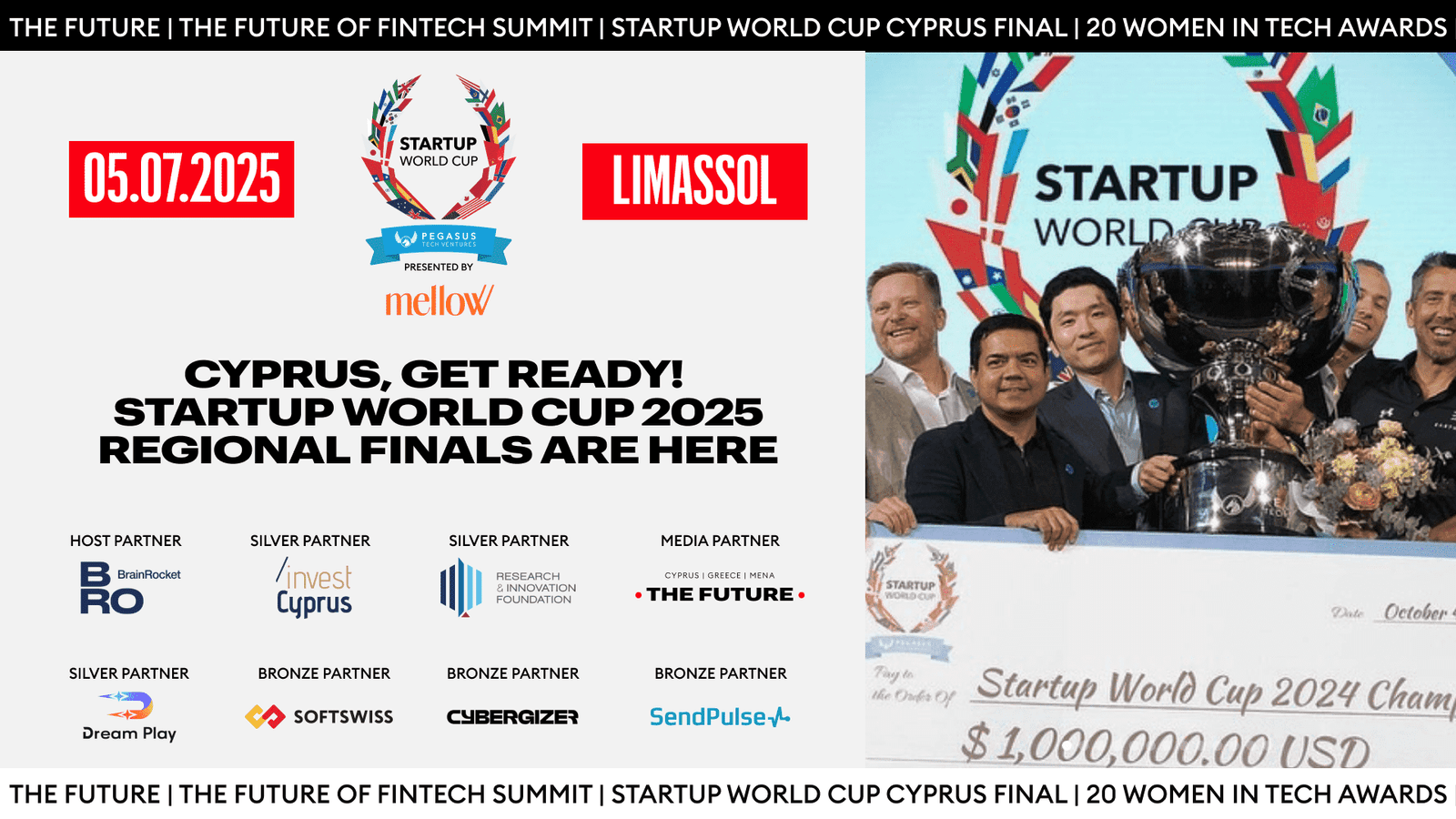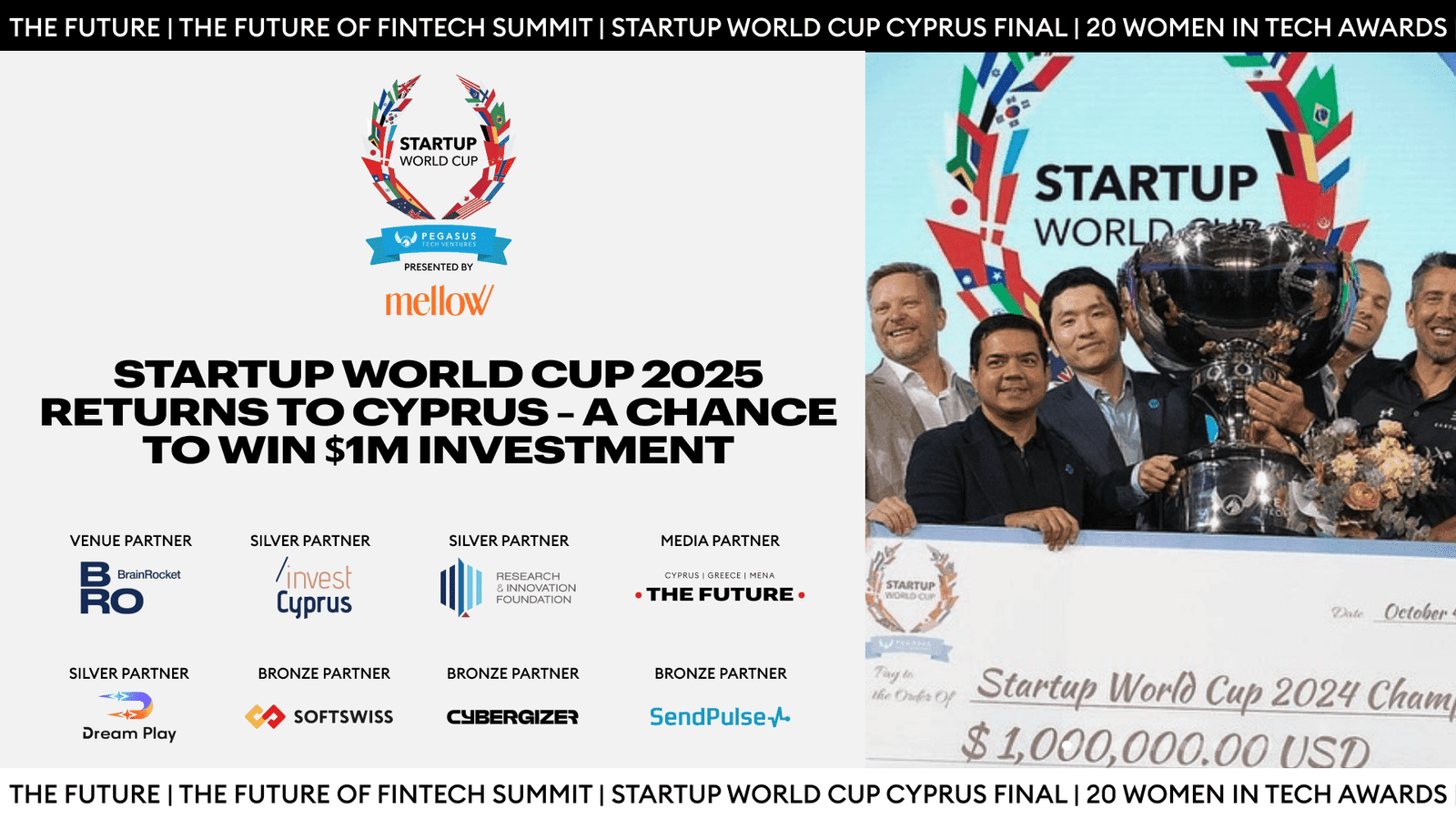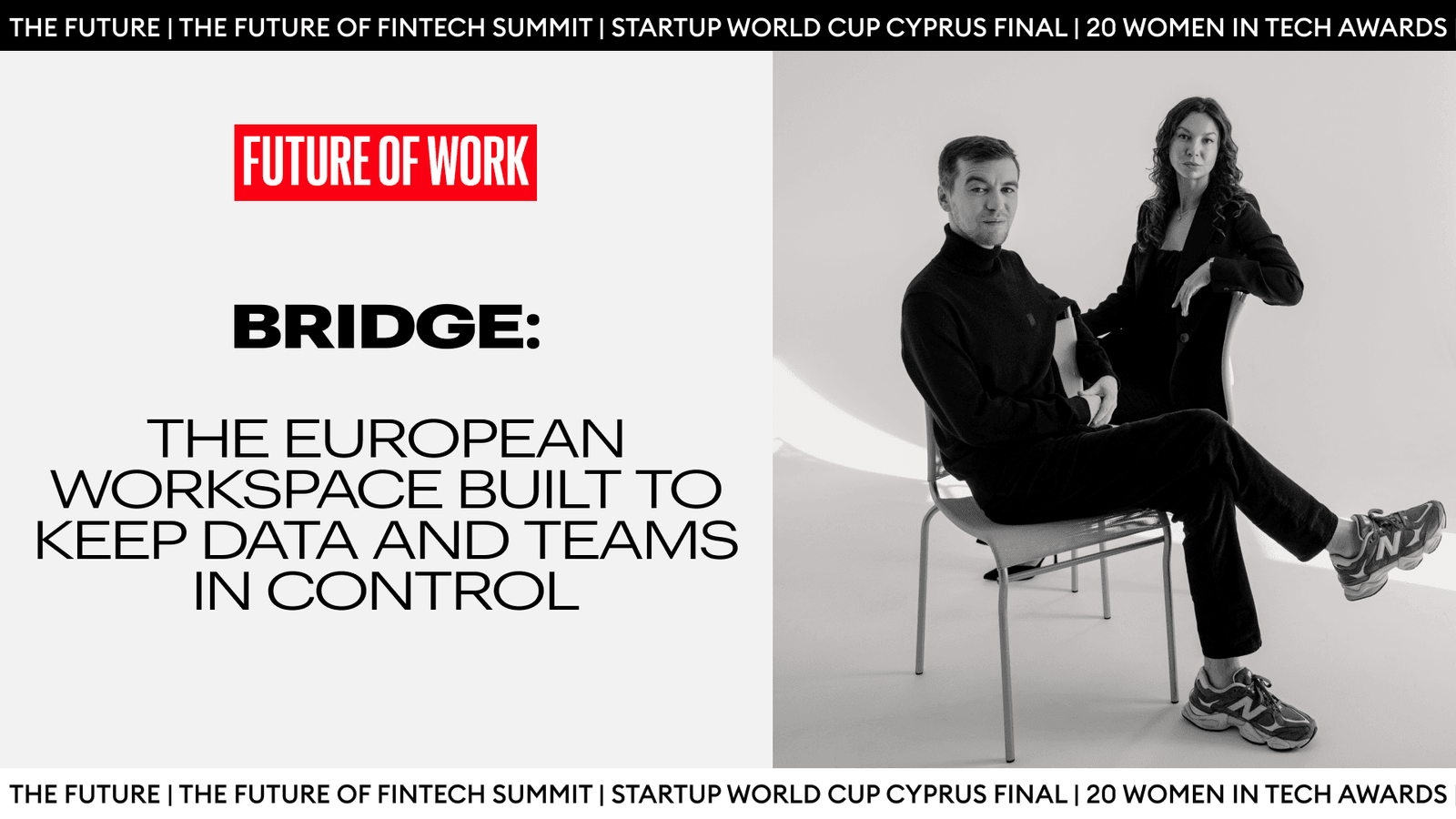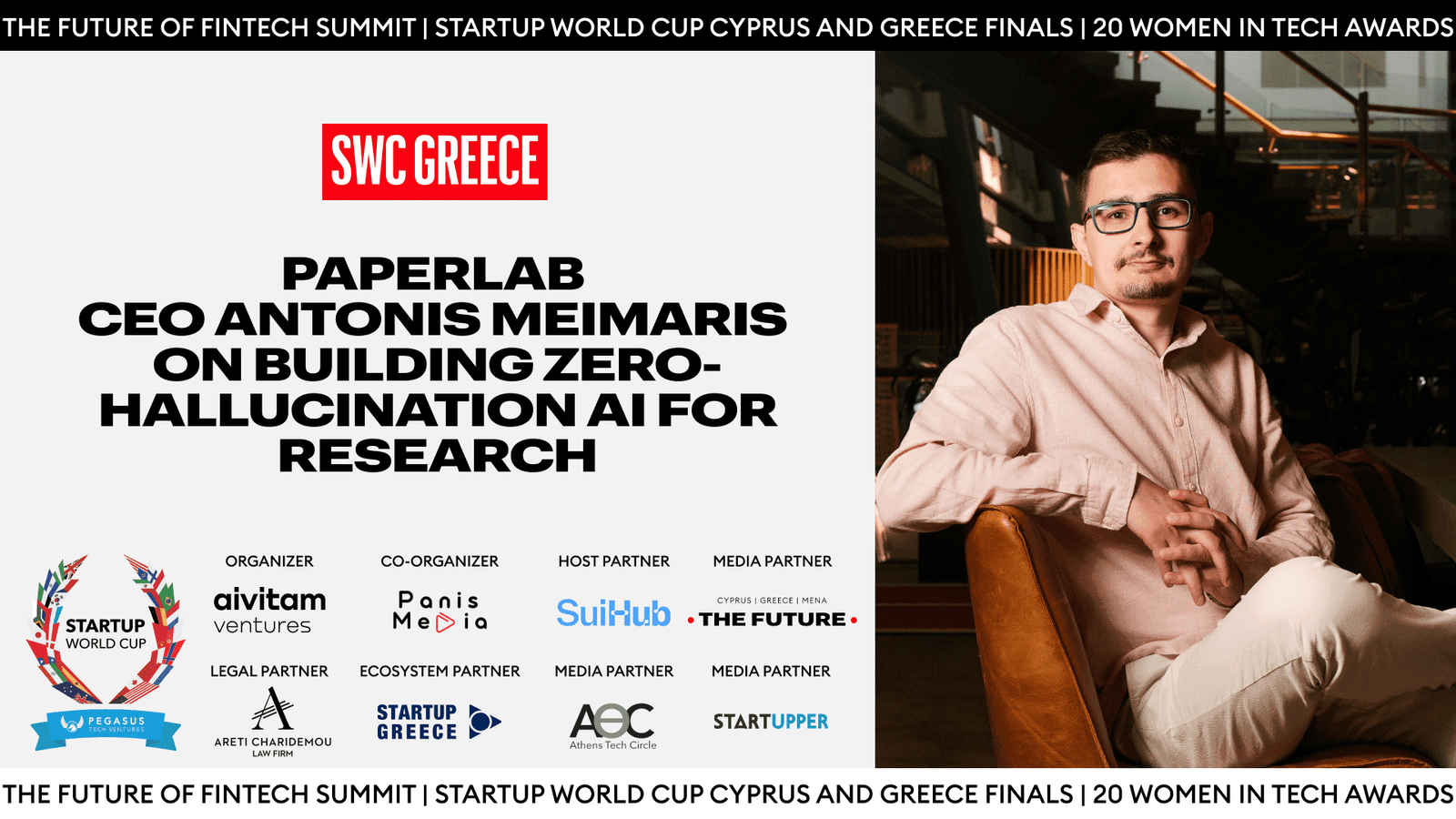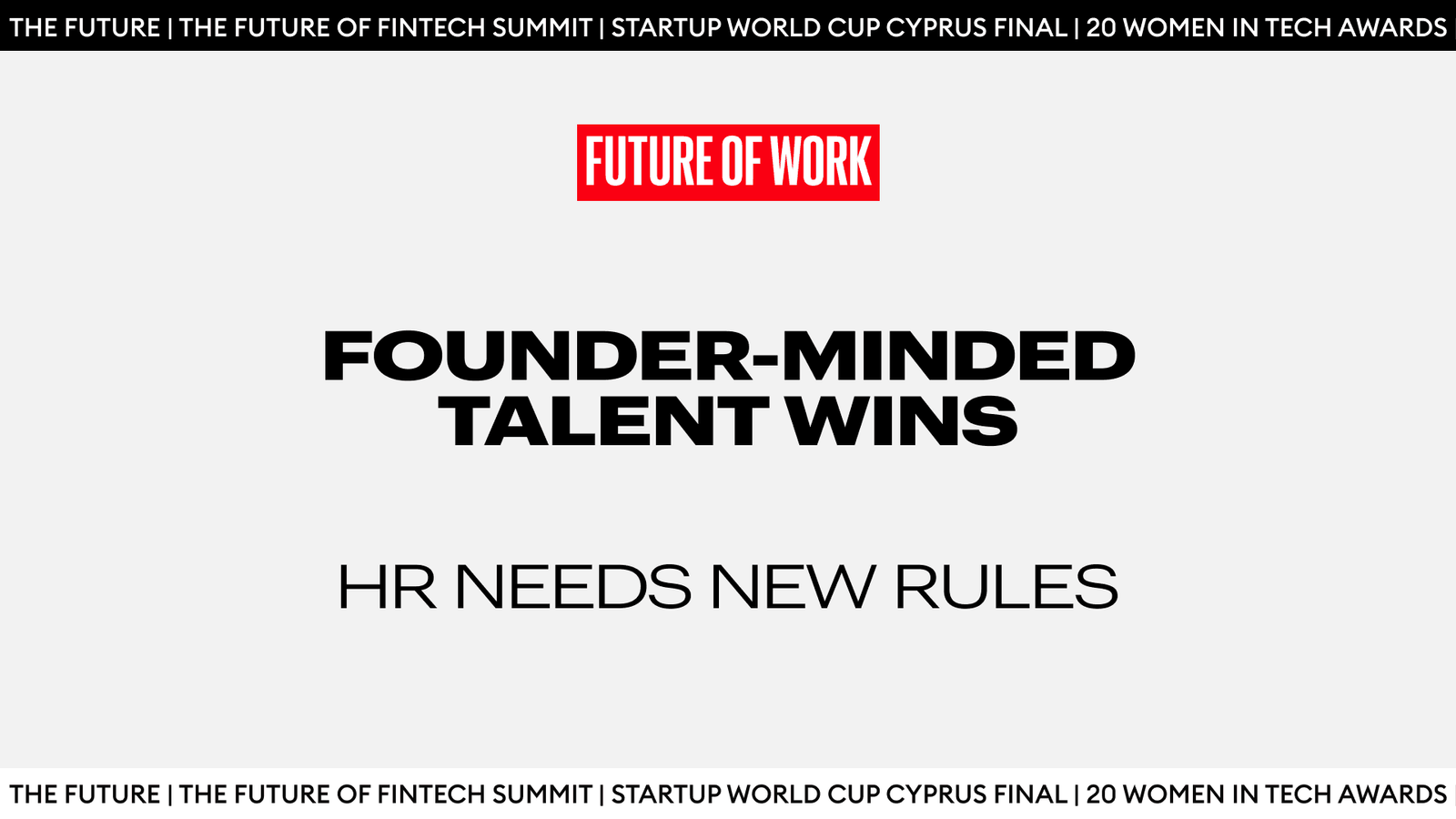As one of Europe’s most active early-stage healthtech investors, Calm/Storm has built a reputation for betting early, and often, on the ideas others overlook. With nearly 90 companies in its portfolio and a growing network of operators, doctors, and entrepreneurs, the fund has carved out a distinct niche at the intersection of digital health, prevention, and “taboo tech.”
A leading voice in their mission is Johannes Blaschke, Calm/Storm’s Partner. Named Forbes 30 under 30, and a former paramedic turned VC, Blaschke brings intellectual curiosity, the drive to bet on “the mad ones,” and an insatiable appetite for pushing limits in digital health.
Follow THE FUTURE on LinkedIn, Facebook, Instagram, X and Telegram
In this exclusive interview with The Future Media, Johannes reflects on his path into healthcare investing, how Calm/Storm is rethinking early-stage funding, and why backing crazy ideas may be the best strategy of all.
Before we discuss Calm/Storm, could you share a bit about your background and what brought you into the world of healthtech and early-stage investing?
I was born in Vienna but spent half my life abroad. After finishing high school in Austria, I chose to do my civil service working as a paramedic for a year. I was, at the time, firmly on the road to becoming a doctor. But, after seeing so many people dying in front of me, I realized I couldn’t cope with that side of the profession. I still felt strongly about working in healthcare, but I definitely didn’t see myself on the clinical side.
I got my first experience in venture around seven years ago at a fund called Speedinvest. It’s Vienna-based and is also the fund Calm/Storm spun out of.
I then worked with Oxford Science Enterprises, helping academics spin out health tech research into companies. That was followed by a few years in consulting with BCG in Switzerland, focused on medtech, pharma, and insurance, before returning to Vienna to join Calm/Storm just over two and a half years ago, that is two years after the company was started.
And it’s been quite a journey.
Calm/Storm has been recognized as Europe’s most active early-stage healthtech investor. What was the original vision behind the fund, and how has it evolved into what it is today?
The genesis of Calm/Storm goes back about five years, at a time when most of the top-tier, more agnostic VC funds had yet to jump on the health tech train. Even pre-COVID, we saw a substantial vacuum in early-stage health tech funding.
So, the fund was founded in 2020, and just as we were preparing to invest, COVID hit. In some ways, you could say we were well-prepared to be lucky. Healthtech suddenly became the next big wave in venture capital.
The initial vision was to put capital where it’s needed the most, namely at the very early stage, so pre-seed and seed. We focus on impact-driven healthcare startups, but specifically on software. We don’t do molecules, we don’t do hardware. What we back is what we call “digital health” as opposed to traditional medtech or biotech.
From the beginning, Calm/Storm wanted to back areas that were still being overlooked. We sometimes call ourselves a “taboo tech investor.” What do I mean by that? Taboo tech is everything from women’s health to mental health in general, and other conditions that are stigmatized or difficult to discuss openly in today’s society.
That early focus has gained us recognition as Europe’s most active health tech investor for the past three years, especially in the European femtech sector. We have invested in almost 90 companies to date across Europe and North America.
And as such, for example, yes, we’ve been for the last three years in a row, the most active health tech investor in Europe, having done almost 90 investments. So we’ve been very, very active. We’ve also been the most active European femtech and women’s health investor.
You’ve mentioned Calm/Storm backs a lot of startups in areas other investors often overlook, particularly “taboo tech.” Why has that focus been important for the fund?
It’s a mix, really. It also reflects my own motivations as an investor come from. If you think about it conceptually, who are venture capital investors? They’re not just these greedy, financially-driven people whose main goal in life is to get rich. The financial side is a part of the job you can’t ignore. At the end of the day, you’re in the business of making rich people richer. Otherwise, your business model doesn’t work.
But I also believe we are multipliers of innovation. As a kid, I would look up to these figures in tech who I could see had the potential to change realities. People like Zuckerberg, Bezos, and Steve Jobs really changed the way we live. But imagine if these people, these incredibly smart people, did the same in a very impactful area.
We are not living in the kind of reality that shows our best sides: social divide and inequality, geopolitical instability, increasing environmental health challenges, and the list goes on. As an investor, you have the opportunity to channel these great minds to the more important questions of life and to the areas that actually matter. For me, that’s my motivation to invest in healthcare.
I want to look back in ten to twenty years and say, I played a small part in the innovations that changed the lives of millions.
Calm/Storm is known for investing at the super-early stage, sometimes even before a final co-founder team is in place. What qualities or signals do you look for in founders at such an early phase?
That’s a big question. You could almost argue that at this stage, the only thing that matters is the team. The product might not be there yet. The market might change, or you may even end up switching markets. So, you’re investing in the people.
Then the question is, what’s the perfect team, and how do you assess that? It’s really hard to figure that out in the early stage because you want them to be good at zero to one, but you also want them to be good at one to a hundred, right? And how do you predict that kind of scalability? It’s like predicting a child’s character when it’s still in the womb. But there are a few key things that we look out for.
First, extreme passion. Healthcare is so difficult. Founders need to have a deep connection to the problem they’re solving, that “founder-problem fit.” That will give them the stamina and determination to push through the challenges in healthcare.
Two, past performance. It’s often a good indicator of future performance. What have they built before? Do they have a “right to win” commercially? For example, in Univa’s case, the founder has already built one of the largest neurodevelopmental companies in the UK, and he also sits on NHS boards. That kind of positioning matters.
Three, the team’s relevant capabilities. Do they have a Chief Medical Officer? If they’re building a product with proprietary tech or AI, do they have a strong CTO? In a lot of cases in healthcare, the really difficult thing to crack is a clear business model.
These are the things we look out for.
But there’s no one archetype. The best teams come in all forms. What we’re really looking for is that spark. You want to be inspired by the vision and passion, not just emotionally, but also rationally, by the team’s ability to execute their plan.
What about risk? Is that part of your criteria?
One hundred percent. I’m a big believer in crazy bets, and I love investing in crazy founders. You almost have to be a little out there to build in healthcare because of the low chances of success. So, you need to have an edge in your personality. Some kind of madness.
That doesn’t mean every bet has to be wild. We have companies that are more on the safe side, for instance, telehealth for women by women. It’s not radical, but it’s scalable and has great potential for impact.
But we also go for real moonshots. Because, at the end of the day, as a venture capitalist, it’s all about the outliers. You don’t need every company in your portfolio to succeed. You need these two to three big outliers to break out.
If you don’t have enough defaults in your portfolio, maybe you don’t have enough risk appetite.
You invest in less than 1% of the 150+ digital health startups you review each month. How do you build the kind of deal flow that ensures the best founders want to work with you?
Venture is ultimately about access: access to quality, access to quantity.
How do you do that? You build a brand. You become the kind of investor founders want to work with, not just as individuals but as a team. You also build a strong network of other VCs, who can send you great deals.
More than 100 of our investors are founders themselves, especially in healthcare. That’s a huge source of deal flow. We now have over 90 companies in our portfolio and more than 200 founders in our network. And the best founders, the slightly crazy ones, the ones I call the AAA, they know each other. If they trust you, they will introduce you and open up their network to you. But you have to keep nurturing that trust all the time.
That’s also why we built a broader supporting partner program. We’re a small core team with three partners and around ten people in all. But we’ve built an extended armada of supporters of over 50 official partners: opinion leaders, founders, serial founders, business angels, mostly in the field of healthcare. They help us find, pick, and win the best deals.
So, ultimately, our secret sauce is the power of community.
Looking ahead, what trends or developments in digital health and wellbeing are you most excited about, and how is Calm/Storm positioning itself to capitalize on these opportunities?
There’s so much to be excited about. We’re still such a young ecosystem, especially when you compare it to other areas like fintech or enterprise SaaS. There’s real momentum, a lot of innovation still to happen, and massive potential for impact.
I’ve already mentioned one area we are active in and will continue to back is “taboo tech.” Another major wave we are following closely is longevity and prevention.
People are getting older. Today, we have 1 billion people over 60; by 2050, it will be 2 billion. It’s not about lifespan, but healthspan, so not adding years to life, but also life to years. That’s where prevention plays a role.
Right now, prevention makes up less than 5% of healthcare spending in most countries, even though we know that every €1 spent on prevention today can save the healthcare system €4 down the line. But the systems aren’t set up to prioritize that because there is still more profit in treating people with chronic illness. That said, we are seeing consumers and even insurers pushing for prevention. People are increasingly willing to pay out of pocket for things like blood tests, full body MRIs, and so on, which is something that was accelerated by COVID, and we see strong tailwinds continuing.
The third area we’re interested in is AI to support healthcare providers, including clinical workflow automation. There’s a massive clinical staff shortage globally, and doctors spend 50-70% of their time on admin tasks, which is terrible. That’s the time they should be spending with patients.
We’re not investing in AI to replace clinicians, but to enable them. From diagnostics, monitoring, to treatment, AI can help increase the time they need to spend with their patients and have the tools for more impact. We need the healthcare system to scale more sustainably, and this will come from us investing in the founders who think outside the box.


